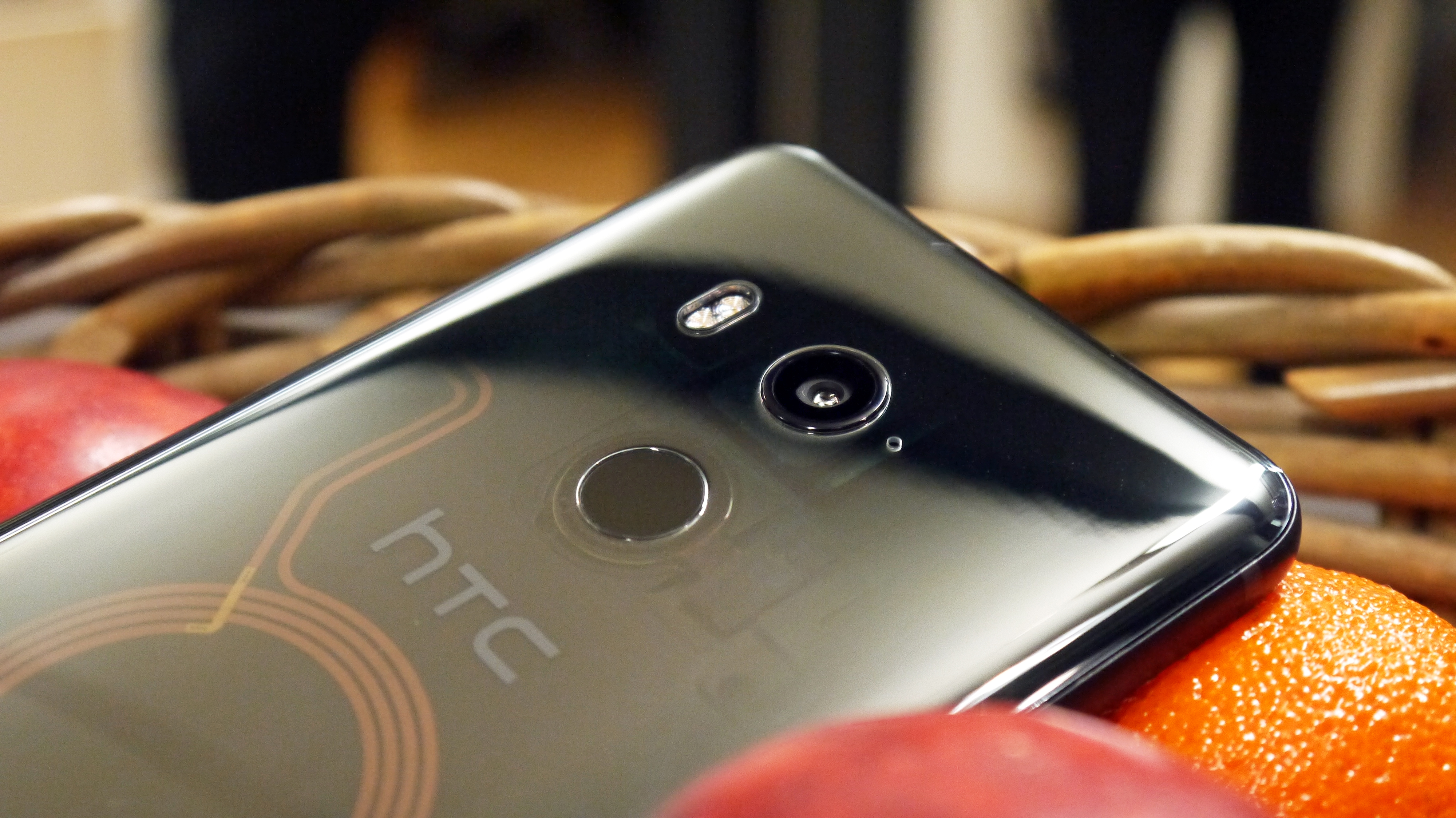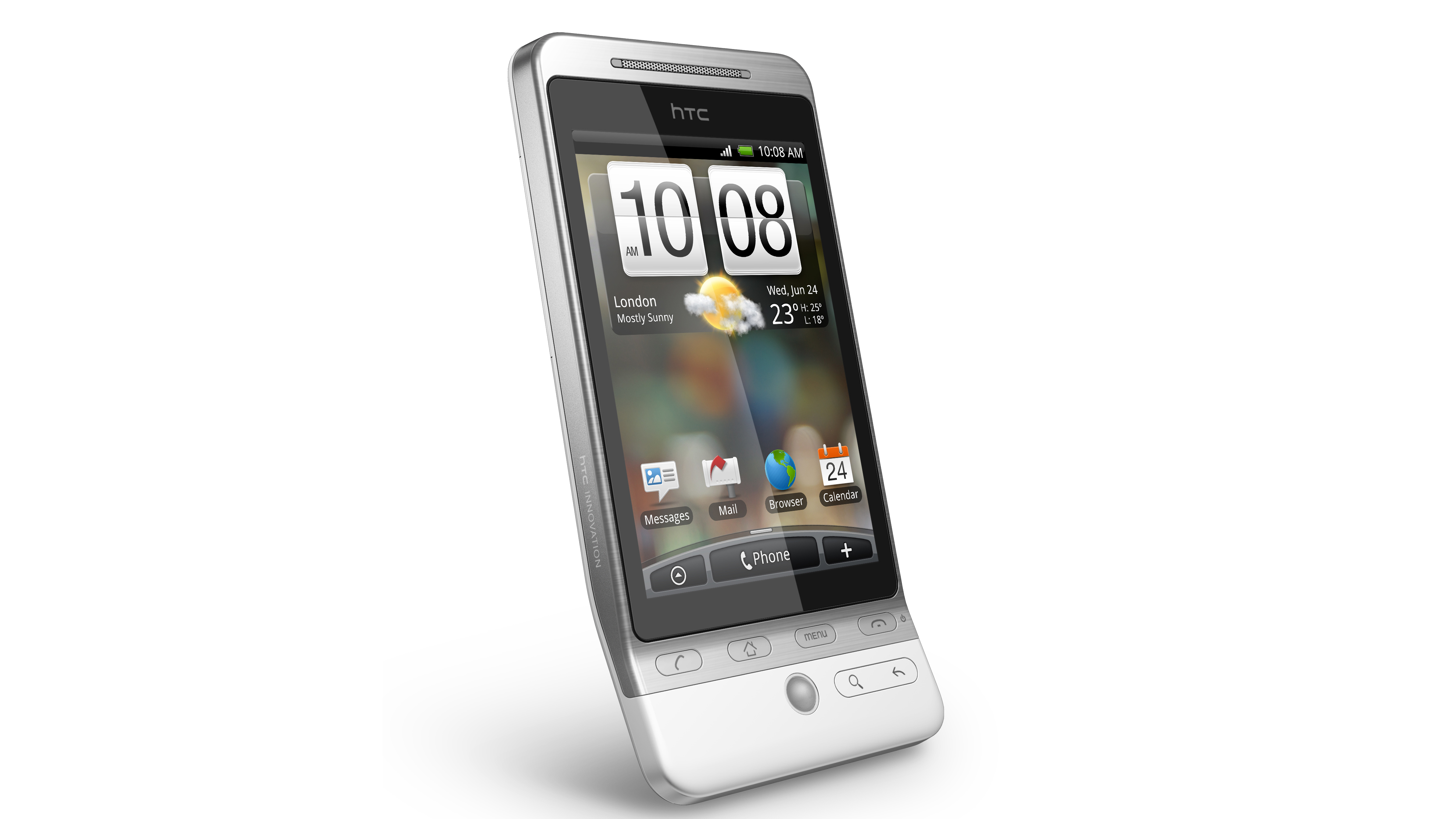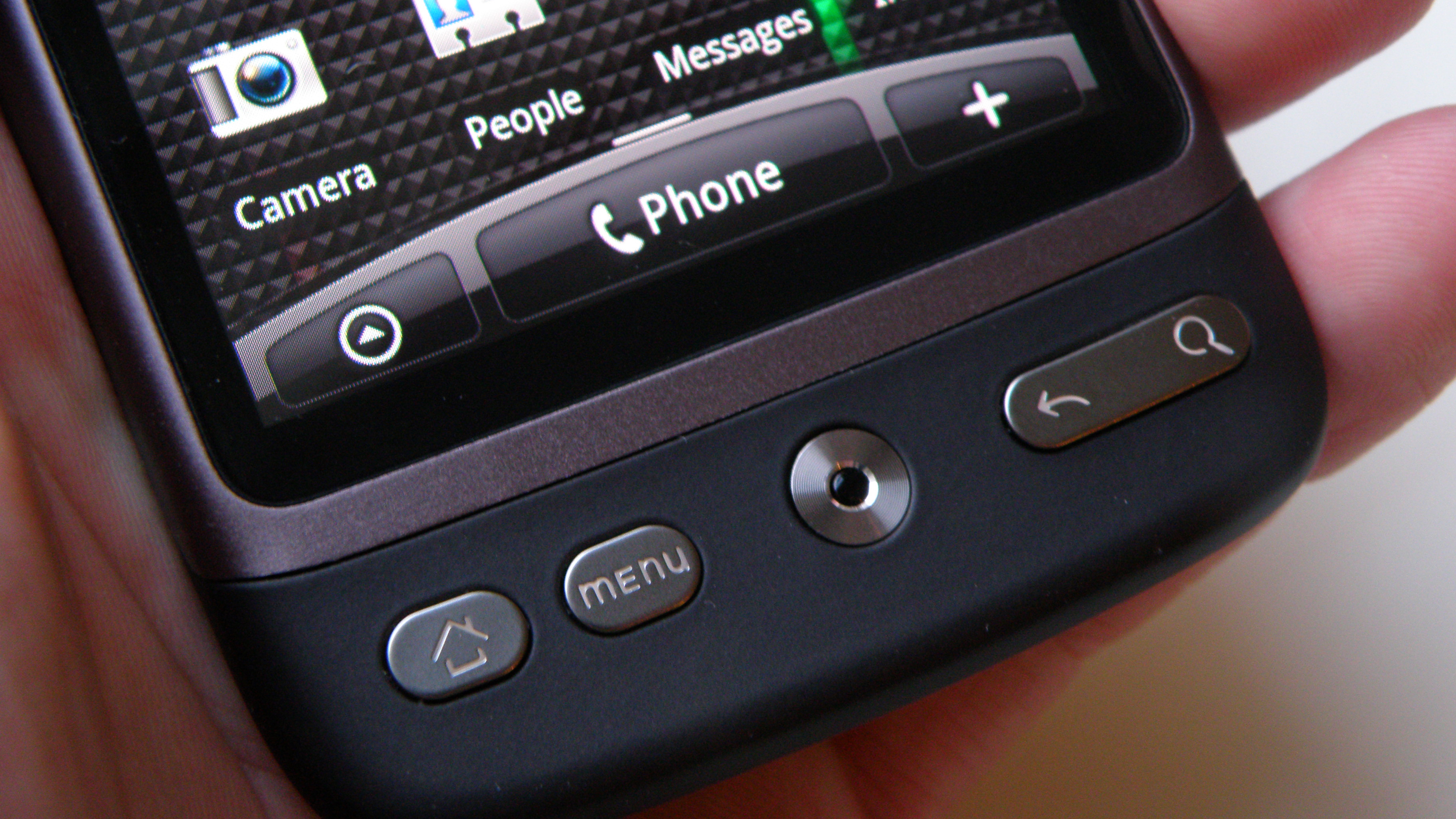HTC still has a future in phones... but it needs to do something drastic
Don't get too excited about future flagships

In May last year I was at a dinner to celebrate 20 years of the HTC brand. Chialin Chang, the newly-anointed president of smartphones, raised a glass to the past, and someone enthusiastically screamed “and here’s to 20 years more!”.
But just a few months later Chang has left his post, with HTC telling TechRadar: “We can confirm Chialin Chang has resigned from his position as President of the Smartphone and Connected Devices Business at HTC.
"We thank him for his dedication to the Company for the last six years and wish him well in his future endeavors.”
Chang’s departure comes in the wake of Google buying half of HTC’s smartphone operation, essentially taking the heart of the phone division and putting it to work making new Pixel handsets.
To the outside world HTC looks near to death, a smartphone brand limping to its demise after years of losses, and certainly not looking a cert for another 20 years of life.
Detractors will argue the writing seems to have been on the wall for a long time, saying HTC no longer seemed to know what kind of company it was, and was trading on past success without taking action to maintain it.
Where once it was the steely underdog of the smartphone world, the perennial thorn in the side of its better-funded rivals, it had been reduced to making ‘me-too’ devices.
Get daily insight, inspiration and deals in your inbox
Sign up for breaking news, reviews, opinion, top tech deals, and more.
Good devices, true, but largely no better than the other great phones that consumers are blessed with being able to pick from. HTC has gone from being unique enough to warrant a place in debates about the best smartphones on the market to making phones that are good in some areas, but behind the market in others.
With the loss of Chang, the constant losses and the bulk of the smartphone business being sold, it would be easy to conclude that HTC is on the way out. But there are reasons to think we could still a phoenix company rise from the ashes.
A better past
To predict the future here, first we need to look at what happened in the past, and there the tale of HTC is has two competing narratives.
One is of a company that lost its nerve at crucial times and made poor decisions, but the other is that HTC had the misfortune to butt up against an industry that favors those with deeper pockets and larger resources.
In the early years, HTC was one of the most impressive companies in the smartphone space. The first phone I ever used when I joined TechRadar back in 2008 was the HTC Touch Diamond 2, and it was entrancing.
It made Windows Mobile usable, with the TouchFlo interface on top making the clunky Microsoft operating system something more desirable.
That handset was followed by phones like the HTC HD2, a cult device that still sees developers trying to get the latest Android operating systems running on it despite it using hardware that’s approaching a decade old.
HTC kept doing things with Windows Mobile that shouldn’t really have been possible, so when it became one of the key manufacturers at the birth of Android few were surprised: one of the darlings of the nascent smartphone industry running around the Google campus was as close to a certainty for success as it was possible to find.

The HTC Dream (AKA the T-Mobile G1), the HTC Magic and the HTC Hero were all brilliant phones that ran with little power but packed in so much usability, with the latter phone giving birth to HTC Sense, the software that showed the customization possibilities available with Android, and which propelled HTC to even greater heights.
“Heart and love of product was what made us successful in the beginning, not just being a first mover,” a key ex-employee of HTC told me, under condition of anonymity. “Because back then, that really was enough and we could keep up that momentum.”
That momentum led to the creation of the HTC Desire in 2010, a phone that was the first true iPhone rival on the market in the eyes of anyone who wasn’t an Apple fan. It had power, a clean design and a lovely OLED screen to look at.
It was superior technically to the iPhone in so many ways, worked in a slick manner and cost less… and the halo effect translated into sales, and a golden period for the company.
By 2011 HTC was one of the biggest smartphone brands in the US – a tricky market to succeed in. Sales were increasing, and things were looking rosy.
This burgeoning success was overseen by CEO Peter Chou, a man who some compared to Steve Jobs due to his enthusiasm to create phones that were a fusion of usability and design.
His engineering background gave him a precise eye for detail; he wanted every HTC phone to have a common design language, and software packed with features to delight users.
(When I met him years ago in London, he spent an incredibly large amount of time chatting about the weather widget – yes, it packed far more information on a phone screen than others of the time, but it was that attention to detail that marked him out as a ‘progressive’ CEO at the time).
However, even at the height of the company’s success, signs of a brand that wasn’t quite in control of its destiny were starting to appear.
Alongside the HTC Desire launched the HTC Legend, a beautiful metal phone with a more attractive feel in the hand and packing a more vibrant screen.
However, this phone was hidden in the shadows, locked only to certain networks on exclusive deals that meant it would never be given the exposure it deserved.
History obviously shows that Chou never hit the same heady heights as Jobs, quietly exiting his position in 2015 (and the company a year later), but for a few years HTC was the most ‘worthy’ competitor to Apple, doing so much on far fewer resources than rivals.
Teetering on the edge
But it was in HTC’s attempts to follow up the Desire’s success that things started to wobble, as the company tried to level-up from a small ODM to genuine smartphone Goliath.
Phones like the Desire HD and HTC Sensation appeared with muted fanfare due to an overly-complicated user experience or poor battery life, and the brand’s part-purchase of audio brand Beats never resulted in better handsets.
(The special edition Sensation XE, for instance, basically had Beats’ branding and a slightly tuned audio experience – it didn’t feel like the best use of a brand that Apple would one day buy for billions).
The HTC One X appeared in 2012 to try and right things, but this was another ‘me too’ phone in the world of similar-looking devices – plastic design, fine camera, iffy battery. HTC wasn’t doing anything new.
But in 2013, it did do something new. HTC managed something that few other brands have ever managed: it rebooted, and forced its way back to the top of the smartphone game, at least critically, with its new range of ‘One’ smartphones.
The HTC One, and the follow-up One M8 were (stupid naming conventions aside) two of the best phones I’ve ever held… the M8, in particular, achieving that impossible feat of being an even better sequel to a wildly impressive first effort.
HTC was zagging when the industry was zigging… metal unibody, amazing cameras that focused on what the user wanted, and an interface that really brought extra functionality to users’ lives.
Features like HTC Zoe – which captured short videos with each shot and spliced them into little movies – were ahead of their time and very similar functionality can be seen in the iPhone with Apple's Live Photos.
Proof of the improvement was palpable. A key HTC marketing exec told me he had been practically begging the networks in the US to take the HTC One, but those same conversations were much, much easier the following year when the One M8 was vying for space on store shelves.
The slide
But in 2015, the company lost its nerve. The HTC One M9 was barely an improvement on the One M8 – just polished a little bit. The amazing dual-camera (again, sound familiar?) was lost in favor of a boring, off-the-shelf sensor.
Instead of doubling down, HTC made another me-too phone. Other brands were catching up with some of the features that had made the One series of smartphones so awesome, and HTC seemed to panic and just try to spec-match, rather than innovate.
Key staff began to leave, and it seemed the recipe for the special sauce that had gone into its flagship phones was disappearing with them.
“HTC had the ‘first mover’ advantage, but eventually other companies like Samsung and LG were able to use their [lower-priced] components and [wider] distribution to overpower HTC,” said the anonymous HTC employee.
“We couldn't see that from the inside. What we saw was our software / UX advantage and our cool designs. When Samsung's design started finally catch up we had no advantages left. Except for heart.
“So many people poured every ounce of their passion into HTC. Heart and love of product was what made us successful in the beginning, not just being a first mover. Because back then that really was enough and we could keep up that momentum.”
HTC’s next phones – the HTC 10 and HTC U11 – were good, and in some areas (music, for instance) excellent… but it was apparently too little, too late. HTC found itself running into the same issue time and again: it was big enough to be innovative, but too small to fight the marketing power and buying power of the incumbent brands.
It was also starting to focus on the popular HTC Vive VR headset, which was turning far more heads than any of its flagship smartphones.
I'm not even remotely sorry about this. I had an amazing time #HTCVivePre pic.twitter.com/47k9kAXWhFJanuary 5, 2016
That said, HTC chose terrible marketing strategies at times too for its handsets. The multi-million campaign to hire Robert Downey Jr led to some excruciating advertising (anyone remember Hipster Troll Carwash?) with Downey Jr having creative control over the ads themselves.
Perhaps the writing was already on the wall for HTC’s ex-smartphone president Chang at the very start of his stewardship last year.
At a round table, when asked what HTC was planning to do in order to reverse the slide it found itself experiencing, he told me: “We’ll target the old HTC users, premium users who compare Android phones, and make sure we have a dynamic sentiment analysis, which we didn’t do very well in the past.
“We’ll find what sort of message they want to see more of and adjust accordingly… a more targeted approach.
“At the end of the day [those users] want to see the real phone, and messaging consistent with that real phone and how they perceive the brand. Brand is obviously taking time to build, it’s not an overnight thing.”

Any brand that tries to recapture its past glories in the smartphone market is doomed to fail, if all it wants to do is remind people why it used to be good. What it needs to do instead is focus entirely on being different, relevant and exciting.
This is where the comparison with the Nokia brand comes in. Now run by HMD Global, a new company featuring a raft of ex-Nokia employees – and ironically, some from HTC – as well as working with Foxconn (the factory manufacturer of the iPhone, among other brands), Nokia has gone from nowhere to selling millions of phones in the space of a year.
In fact, Nokia phones are now outselling handsets from OnePlus and Google – but that doesn’t really tell the whole story. HMD Global has only put out one ‘high-end’ phone, the Nokia 8, and none offering the kind of performance the true flagships on the market can boast.
No - Rather than headline-grabbing flagship features, Nokia’s success is the result of fusing a well-known brand with good build quality and decent specs in key components like the battery and camera... but on cheaper phones.
Nothing about its handsets is earth-shattering, but Nokia is drawing on a heritage of strong performance in these areas, and updating it for a market in which smartphones are largely commoditized.
And that’s where HTC’s strength can still lie. It’s hard to say how strong that heritage is now, given that half of the smartphone staff have moved to Google, but if enough remains of the engineering team and facilities, there’s still a chance that we’ll continue to see HTC phones on shelves in years to come.
The first thing the company has to do is forget about high-end flagship phones. Ex-smartphone president Chang talked last year about ‘halo’ devices that would cast a glow onto the rest of the HTC range, but that strategy only works if those flagship phones are selling in droves, causing consumers who want the expensive model, but can’t afford it, to look at the lower-priced options.
The smartphone world is different now. The SIM-free phone is growing rapidly in popularity, people are holding onto devices for longer, and they’re looking for value for money with an upgrade. A cheap phone now needs to not only work well, but offer perceived innovation too.
A recent tour of HTC’s Taiwanese facilities showed that there’s still a rich vein of that innovation running through the brand. In a set of drawers in the main HQ, there are multiple prototype variants of the company’s flagship handsets over the years, ranging from differently-shaped camera holes on the premium phones of yesteryear to smart takes on a gaming handset… sadly I wasn’t able to take pictures, nor am I able to go into more detail here, but creativity has been part of the HTC picture for years.
The imaging and audio development departments that brought us the impressive HTC One and HTC 10 still pack the same facilities that launched those handsets, and there’s a real care taken in the creation of each handset, with 50 people handling a device before it’s shipped out to the consumer.
The brand still is taking a bullish stance on its future, stating (somewhat blandly) to TechRadar: "HTC remains fully committed to our branded smartphone business, and we have an exciting 2018 product pipeline."
Reinventing itself won’t be an easy task – but if HTC forgets about putting high-end features in high-end phones and focuses on infusing cheaper phones with better cameras, audio and design, those handsets can become a very strong proposition against brands that are less well-known.
That’s how HTC can remind users of its heritage. It’s always sad to see a once-great brand falling from the peak of the smartphone game, but the market has shifted and HTC didn’t have the scale to compete… will it still be able to turn things around?

Gareth has been part of the consumer technology world in a career spanning three decades. He started life as a staff writer on the fledgling TechRadar, and has grew with the site (primarily as phones, tablets and wearables editor) until becoming Global Editor in Chief in 2018. Gareth has written over 4,000 articles for TechRadar, has contributed expert insight to a number of other publications, chaired panels on zeitgeist technologies, presented at the Gadget Show Live as well as representing the brand on TV and radio for multiple channels including Sky, BBC, ITV and Al-Jazeera. Passionate about fitness, he can bore anyone rigid about stress management, sleep tracking, heart rate variance as well as bemoaning something about the latest iPhone, Galaxy or OLED TV.